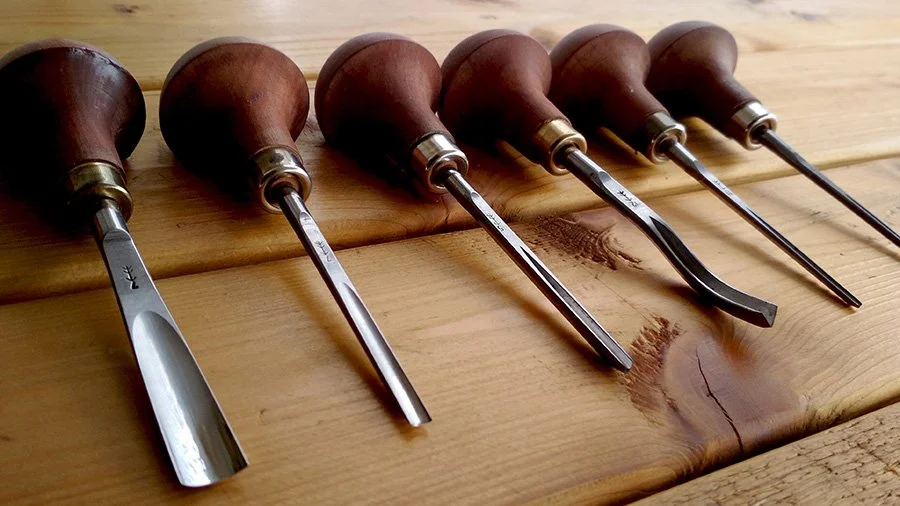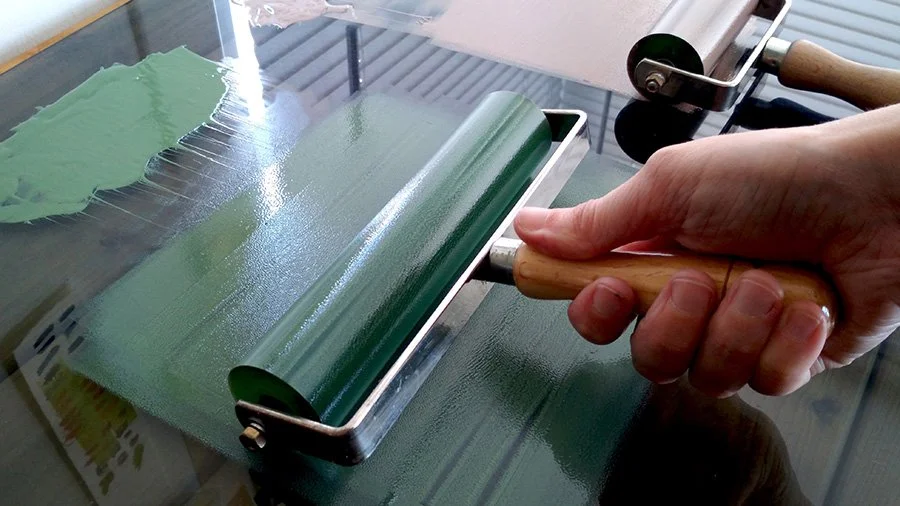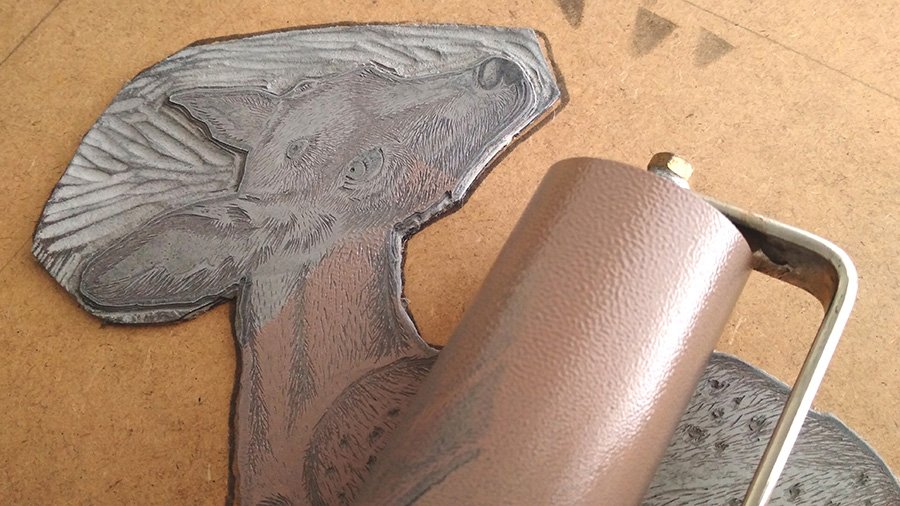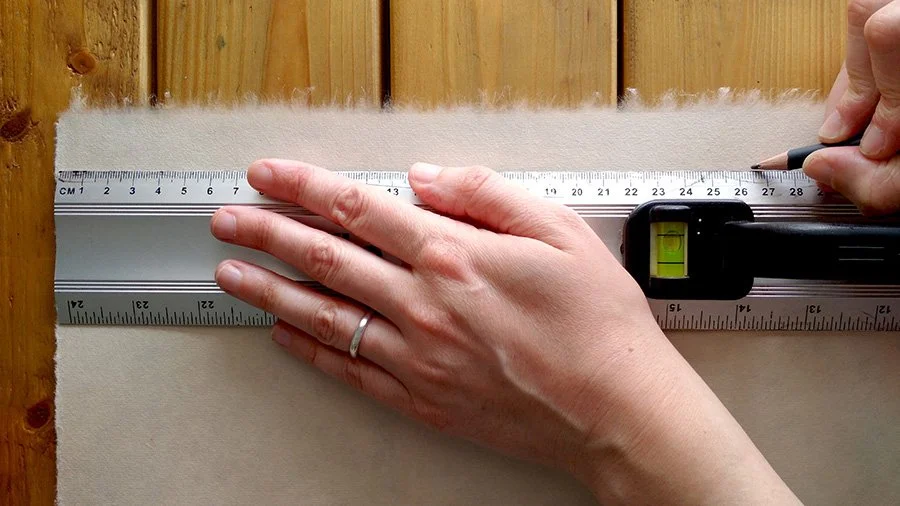What is a Linocut?
Linocut is a relief printmaking method which uses a linoleum block to print an image. The surface of the block is carved to create an image. Ink is applied to the remaining surface using a roller. The linoleum block is then impressed onto paper to transfer the image.
When introducing my art to friends, family and potential buyers, I’m often asked to explain how it was made. On occasion, I’ve been asked if I can I provide a particular print at a different size - which due to the process of the method, is impossible. So to help provide a better understanding, I wanted to explain how linocuts are made. I hope this helps anyone looking to purchase a linocut - from me or from any other linocut artist!
Linocut 101
Linoleum was invented in 1860, but it wasn’t until the turn of the century when artists began to use it in their work. When looking for an alternative to woodcut for printmaking, linoleum offered a cheaper and easier surface to carve. And so, the medium known as linocut was born.
In its early days, linocut was often looked down upon in art circles, often considered a lesser form of art. It wasn’t until the 1950s when opinions began to change. Artists such as Matisse and Picasso began to use the medium in their work; Pablo Picasso is particularly credited for inventing the reduction technique.
Today, linocut can still sometimes carry some level of stigma in some art circles. It can be seen as a hobbyist activity, more on the side of craft rather than art, and too simple or not challenging enough. I don’t believe in this misinformed mindset. Whilst linocut is a very accessible medium, it still takes serious practice to master. I also love linocut for it’s accessibility and I don’t see this as a negative - we need more creative people in this world! It’s also the perfect artform that marries art with craft.
The process of a linocut
Linocuts are created by the hands of the artist. Each step of the process is performed by hand, and each print is likely touched a thousand times before reaching the hands of the buyer. From carving to paper cutting, inking and burnishing - even when using a printing press, the handle or wheel is being pulled by the hands of the artist.
A linocut starts its journey as a drawing. Sometimes the drawing is first drafted onto paper which is then reversed and traced onto the linoleum, or the artist may draw directly onto the surface of the lino. The artist will then ‘cut’ into the surface of the lino (although it’s more like carving) using a variety of sharp tools, almost similar to chisels. The tools come in different shapes and sizes, and help the artist to make a variety of marks into the surface of the lino.
Any lino surface that is removed will not appear in the print. When working in one colour, the artist will remove the ‘white’ areas of the image, and any surface left behind will be inked up and transferred onto paper. Areas that are removed allow the colour of the paper to show through in the print. If the artist slips and accidentally cuts an area intended for printing, this cannot be easily fixed. Mistakes often have to be embraced, or it’s back to the drawing board!
When the design is cut, the surface is inked up using a roller (also known as a brayer). The ink needs to be rolled onto the block in thin layers, to ensure the finer details in the print are not filled in with ink and lost.
Paper is carefully placed on top of the freshly inked lino block. Pressure is then applied to the back of the paper, which will transfer the ink from the block to the paper. Pressure can be applied by either rubbing with a wooden spoon, using a barren, or a printing press. The paper is lifted off the block with (hopefully!) a successful image transfer.
This process can be repeated over and over, to create as many prints as the artist desires or within a numbered edition. Although multiples are created, each print will have some slight variation due to how the ink is applied, making each one unique and original.
Working in layers of colour
There are two techniques the artist can use when working in layers of colour; multi-block and reduction.
A multi-block linocut will have several linoleum blocks cut for one image, with each layer representing a different colour and cut in a different way. They are applied one by one, to build up the image.
A reduction linocut will use just one block. After printing the number intended for the edition, the artist will return to the original block and cut away more areas into the design. This allows some of the previous colour to show through under the next layer. With each layer, more and more of the surface is carved away, until the block is ultimately destroyed.
When working in layers, the artist needs to be accurate with their registration. Any slight movement will result in a misprint, and the print may have to be discarded. There’s not a lot of room for error!
Learn more about other linocut techniques.
What’s in an edition?
A linocut can (and often does) take some time to create. Artists will often create multiple prints of the same image, because the process is not cost effective to create just one impression or print.
When creating multiples of the same image, the artist will usually work in an edition. There’s some variation in how printmakers sign and edition their work. But there are a few standards to look out for:
Limited Edition - If the print is numbered ‘1 of 20’ or ‘1 / 20, this means that there are twenty prints in the edition, and the print you are looking at is No.1 in that edition. If an edition size is declared in this way, it means the artist will produce no further prints than the edition stated. This makes the edition a ‘limited edition’ which adds more value to the prints. The number sequence of the print doesn’t imply greater value over others in the edition.
Open Edition (OE) - If the print is numbered, but without an edition number, perhaps stating ‘OE’ - or maybe no number at all; assume this is an open edition, meaning the artist does not want to set a limit and can continue to create as many prints as they desire. Open edition prints are valued less than limited edition, but they are still original artworks and hold some value.
Varied Edition (VE) - If the term ‘Varied’ or ‘VE’ is used, it means there will be different variations of the print available, which may be reflected in colour ways or paper choice. In some cases, the ink application may vastly differ. A varied edition may be in Limited or Open Editions.
Giclée or Genuine?
The 90s invention of Giclée printing has made art more accessible and affordable. Original works like paintings can be reproduced enmasse in print, usually at a cost-effective price for the artist, who can pass that benefit onto their buyer.
Fine artists and digital artists producing giclée prints will often use similar terms such as ‘limited edition’ or ‘original print’ and even signing or numbering their giclée prints - something which printmakers will observe through gritted teeth.
Not to hate on anyone pursuing giclée printing, but it certainly has made the lines somewhat blurry for art consumers. To the untrained eye looking to make a purchase, it can be difficult to determine the true value of a handmade original linocut when you’re mistaking it for, or comparing it to, a giclée print.
An artist who chooses to use printmaking as their medium is using a well practised method, steeped in tradition. Having existed for hundreds of years across multiple cultures; printmaking has helped change the course of history, made art accessible, and pioneered freedom of speech.
Linocuts are a product of love, care, mindful thought and determination. This is what I appreciate about linocuts, and I hope you can share that appreciation with me.





